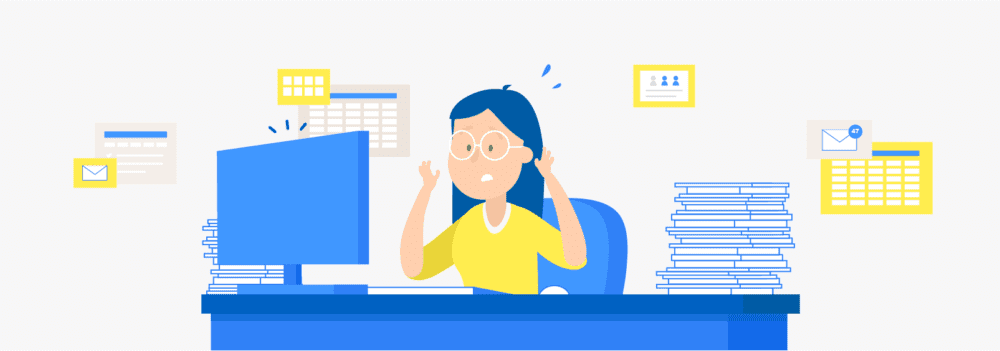9 key benefits of using skills matrices
Discover the nine key benefits of incorporating skills matrices into your workforce management strategy in this article. Learn how they optimize operations, boost productivity, and streamline organizational processes effectively.

It’s important for both individuals and companies to know exactly what skills and competences are available on the work floor at any point in time. A skills matrix is the ideal tool for providing greater clarity about these skills and competences.
But what are skills matrices exactly? And what are the advantages of using them?
In this article, we’ll be answering both these questions in detail.
Copied
But what are skills matrices?Copied
Before we start explaining the benefits of skills matrices, it’s worth briefly discussing what a matrix is exactly. A skills matrix displays all the skills and/or competences that your employees need to perform a range of tasks. What’s more, they also display each employee’s current versus required or desired proficiency level.
It’s most common to list your employees down the left‑hand column and all the skills they need to be able to perform in a certain role along the top row. But it’s equally acceptable to swap these around. Within the body of the matrix, you then enter each staff member’s proficiency level in relation to the level required to perform the task in question. Generally, a symbol, percentage, or qualification level is used to express the level of knowledge attained and/or proficiency demonstrated.
Read more about the ins and outs of skills matrices.
Copied
Benefiting from skills matricesCopied
Using skills matrices has many benefits:
- Once you’ve recorded all the skills, competences, and certifications in your organization, you’ll have a far clearer picture to help with your recruitment & selection, training, and planning.
- Suppose one or more staff members are away or you’re heading into a peak period – you can see at a glance who to deploy and where.
- Skills matrices are also a great means for mapping and tracking team and/or individual progress.
- As you can see, they’re flexible and versatile tools. Both management and staff can use them for general planning purposes, but also for very specific objectives.
The great thing about skills matrices is that they benefit both the company as a whole and the individuals within the company.
Let’s take a closer look at some of these benefits.

Benefits to your companyCopied
This section zooms in on the organizational benefits to be gained by using skills matrices within your company.
Benefit 1: Greater insight into tasks & requirements
Using a skills matrix, it’s easy to work out exactly which skills and/or competences are required to perform a given process. Suppose you need at least three people to be able perform a specific task in order to safeguard continuity, for example independently operating a production line or using a certain software program. A skills matrix’s visual layout allows you to see at a glance if you’re satisfying this requirement, and more importantly, allows you to respond immediately.
If you implement skills matrices properly, you’ll be able to spot shortfalls or skills gaps in an instant. They effectively form a springboard for your recruitment & selection or training efforts. Companies can see exactly which skills gaps need closing. Do you need to hire new staff or train existing staff? Your skills matrix can provide the answer!
Benefit 2: Qualified replacements & peak period planning
Every company has to deal with staff on sick leave or peak periods with high demand. It’s at times like these that it’s vital you safeguard continuity and productivity by responding quickly and effectively. It doesn’t require a great deal of imagination to realize how much easier it makes your planning when you can see at a glance who’s qualified and who’s not.
A skills matrix is, therefore, a perfect tool for finding a replacement with the right expertise when a key member of staff is away sick or for ramping up staffing levels ahead of peak production by moving qualified personnel from one department to another. This can often eliminate the need to hire in temporary staff. Using skills matrices, you can also plan effectively for vacations, ensuring you always have adequate staffing levels.
Benefit 3: Progress monitoring
When you maintain your skills matrices properly, they’ll provide you with a very clear picture of the progress you’re making at both a team and individual level. Important organizational issues include professional development, productivity, and growth in the number of skills acquired and mastered. Skills matrices therefore also form a means to assessing the effectiveness of your training programs. What’s more, they also pinpoint exactly where any skills gaps may exist or are emerging.
Benefit 4: Flexibility & versatility
Skills matrices are known for their flexibility and versatility. You can do so much with them, depending on your exact requirements and objectives. What’s more, you can also use skills matrices at a team or departmental level. This allows you to create custom solutions in response to a wide range of organizational challenges.
Benefit 5: Key players
Every organization has a number of most valuable players or key players with special qualities that deliver above‑average value. Ideally, you wouldn’t want to lose these individuals from your company. Using skills matrices, it becomes a lot easier to identify who these people are. At a single glance, you can see who has which skills and qualifications.

Benefits for your employeesCopied
As you’ve read, maintaining skills matrices has many benefits for your company, but what about for your employees? Below, we’ll be discussing in more detail just how skills matrices can benefit the individuals within your organization.
Benefit 6: Greater clarity
Skills matrices provide your employees with a keener insight into the roles they perform within your organization. What’s expected of them exactly? What can they or do they have to learn in order to perform even better? And what professional development options are available to further their careers? Matrices clarify exactly which skills and competences are required for a specific job or role. They’re a snapshot of where your employees are right now and where opportunities exist for further growth. Giving your employees a clear insight into the value they bring to the table can boost employee satisfaction and motivation levels significantly.
Benefit 7: Greater transparency
Transparency about skills and competences has a positive effect for everyone concerned. And skills matrices provide just that – transparency. Who brings which skills to the organization, which skills exist within which teams, and which qualities employees possess. Everyone can see where they stand in relation to the overall organization and what’s required to fulfill a particular role within a team to the best of their abilities.
Benefit 8: Clearer development paths
We’ve already discussed how skills matrices provide crystal‑clear clarity about which skills are needed for a specific job or role, but they also form a springboard for mapping out career paths and professional development programs. By pinpointing where potential shortfalls exist within an organization in terms of skills and competences, employees can then set learning objectives and plan training programs for themselves – effectively and efficiently. And they reveal the full extent of the growth potential within the organization.
Benefit 9: Reduced stress & workload
Workloads can often become overwhelming whenever a team member is off sick or absent for an extended period. But this can be anticipated and mitigated using skills matrices. A clear picture of who has which skills allows you to strategically reassign resources from team to team or department to department so that increased stress levels and workloads remain manageable. This will also go a long way to preserving a pleasant and stress‑free working environment.

Leveraging these benefitsCopied
Hopefully, it’s now clear how skills matrices could provide a number of major benefits, both for your company and its employees. Here’s a quick recap of the foremost benefits.
- You’ll have a clearer picture of the correlation between actual skills and competences present and those actually required. Is there a skills gap? If so, you’ll be better equipped to respond more rapidly.
- It’ll be easier to find qualified replacements and safeguard efficiency and productivity during peak periods.
- You’ll be able to monitor team and individual progress more easily.
- Skills matrices are flexible tools you can use at any level – individual, team, departmental, or even company‑wide.
- Skills matrices simplify identifying and tracking key figures within your organization.
- Employees get a clearer picture of their qualities and roles within the organization.
- They clarify the career development paths available to employees.
- Knowing who has which skills makes it possible to strategically reassign resources around your organization. This helps prevent co‑workers being deluged under increased workloads when team members are away sick – short‑ or long‑term.
You can create skills matrices in any one of several ways. Many companies still use spreadsheets, such as MS Excel. This is a good start, but they present a number of pitfalls. For example, they’re incredibly error‑prone and version management is also a big problem.
AG5’s software simplifies skill management and eliminates all the pitfalls associated with spreadsheets. What’s more, information can be accessed and updated quickly, easily, and directly from the work floor, because your skill matrices are stored centrally in the cloud.
Curious about what AG5 could do for you? Feel free to get in touch or schedule a live demo.
Use AG5 to identify skill gaps
Say goodbye to Excel matrices. Start using AG5’s plug and play skill matrix software.
ISO27001 certified
Start your 14-day free trial

